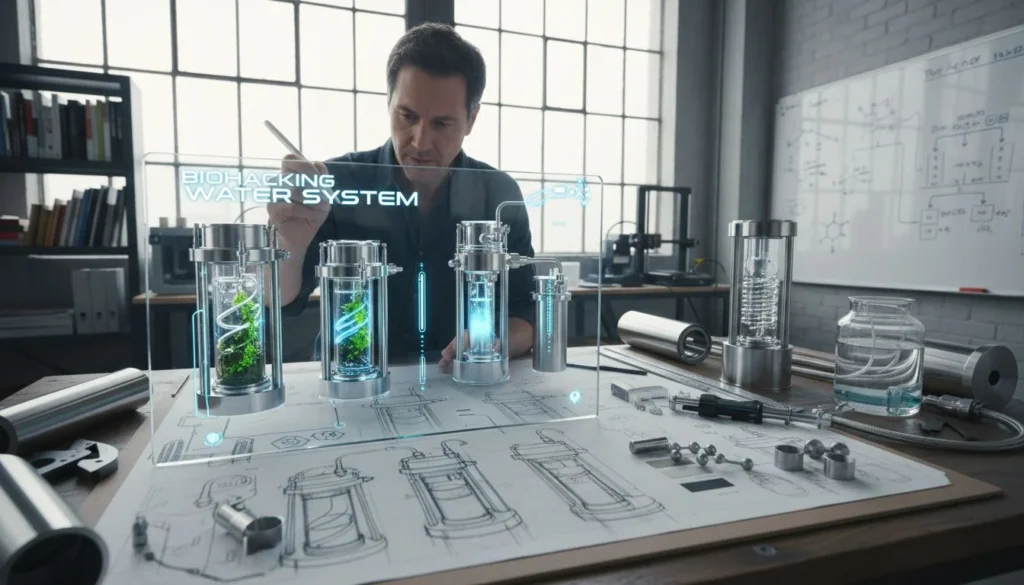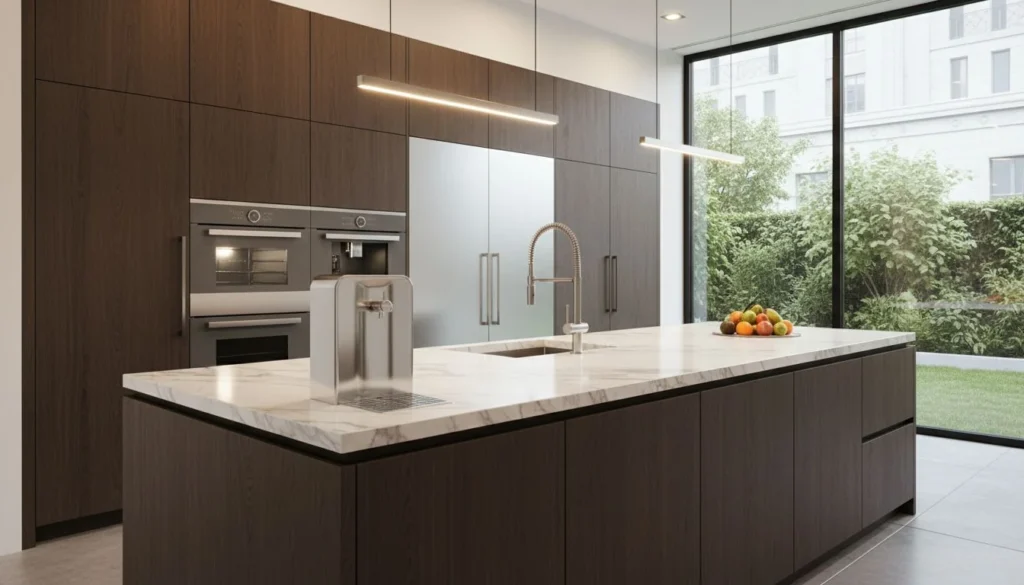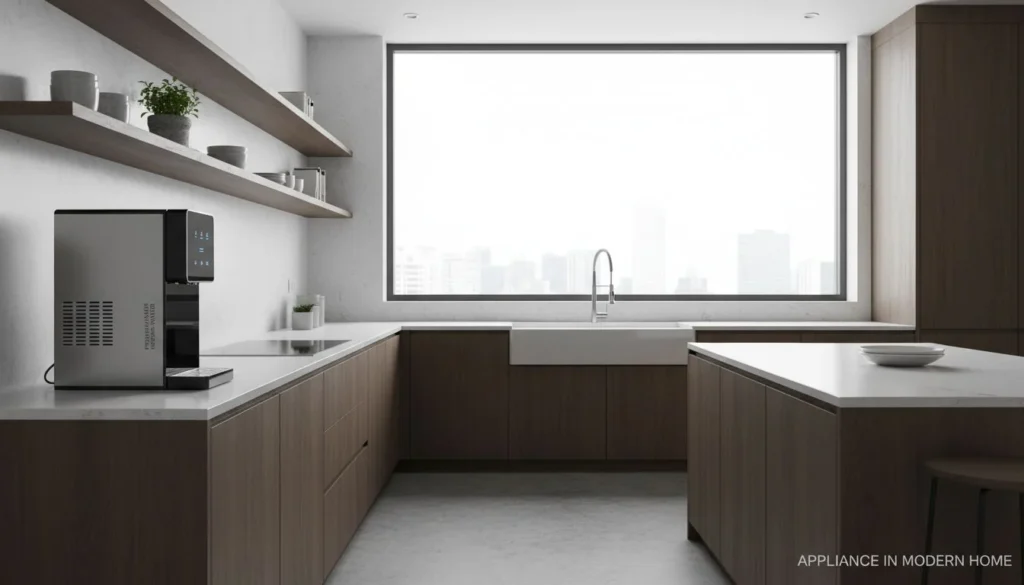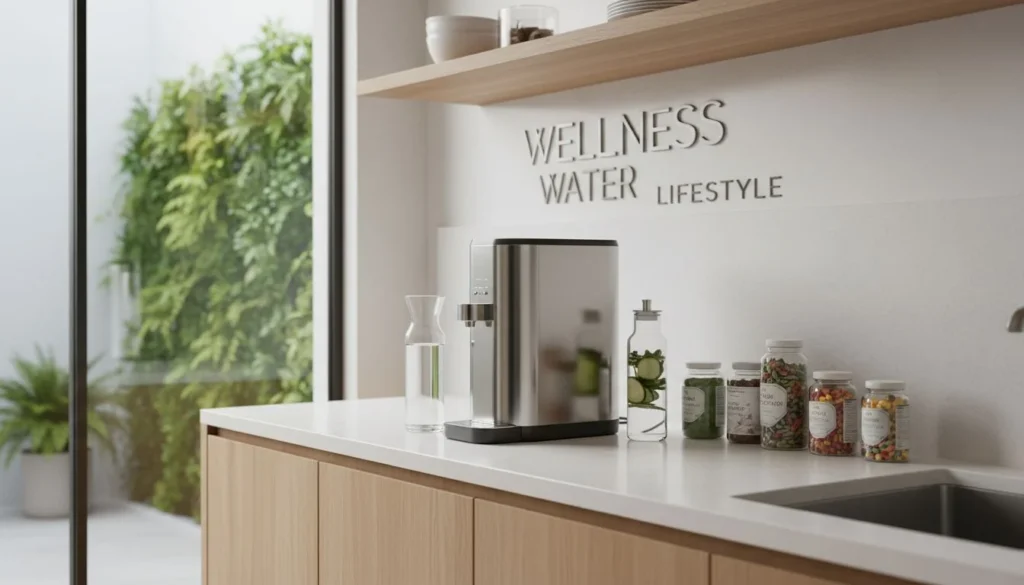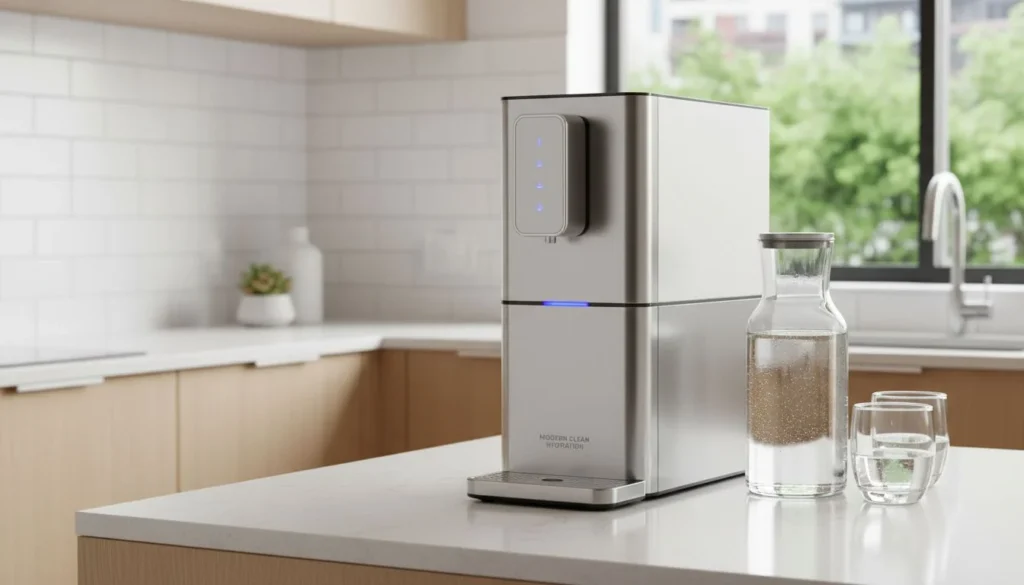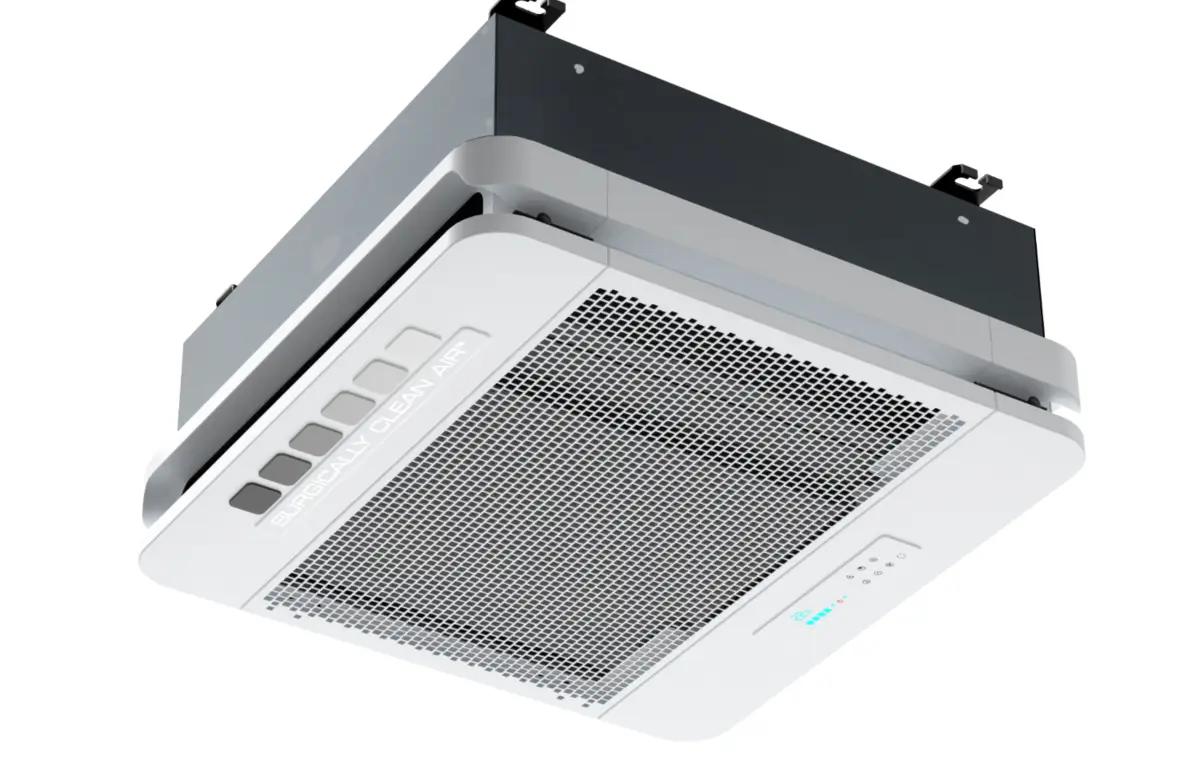
최고의 병원용 공기청정기는 의료용 등급을 사용합니다. HEPA 14개의 필터. 이 필터는 박테리아와 바이러스를 효과적으로 제거합니다. 공기청정기는 높은 청정 공기 전달률(CADR)를 사용하여 넓은 면적을 청소할 수 있습니다. 미국에서는 FDA 승인이 필요합니다. 조용한 작동은 환자를 위한 평화로운 공간을 유지하는 데 중요합니다. 차분한 환경은 치유에 중요합니다.
한 번은 병실에 들어갔던 기억이 납니다. 공기는 강한 임상 냄새로 무겁게 느껴졌습니다. 그때부터 병원 내 공기질의 중요성을 실감하게 되었습니다. 공기청정기를 선택할 때는 의료용 필터를 선택하거나 다음을 확인하는 것 이상을 고려해야 합니다. CADR 평가. 목표는 환자가 잘 치료할 수 있는 환경을 조성하는 것입니다. 설치 옵션에 대해 생각해 보세요. 바쁜 병동에서는 벽걸이형 유닛이 가장 효과적일 수 있습니다. 소음 수준도 중요합니다. 기계가 시끄럽게 윙윙거리는 동안 휴식을 취하거나 의사와 대화를 나누려고 한다고 상상해 보세요. FDA 승인과 같은 인증은 해당 기기가 엄격한 보건 규칙을 충족한다는 것을 보여줍니다. 이러한 결정을 내릴 때는 단순히 기능뿐만 아니라 이러한 기계가 영향을 미치는 사람들에 대해서도 고려해야 합니다. 생명에 관한 문제입니다.
병원용 공기청정기에는 HEPA 14 필터가 필수입니다.True
HEPA 14 필터는 병원에서 매우 중요한 박테리아와 바이러스를 효과적으로 제거합니다.
모든 병원용 공기청정기는 FDA 승인을 받아야 합니다.False
FDA 승인은 미국에서만 필요하며 모든 병원에 보편적으로 적용되는 것은 아닙니다.
병원용 공기청정기에 의료용 필터가 필수인 이유는 무엇인가요?
병원에 들어가 산들바람처럼 상쾌한 공기를 들이마신다고 상상해 보세요. 이것이 바로 의료용 필터의 놀라운 기능입니다.
다음과 같은 의료용 필터 HEPA 14는 병원 공기청정기에서 중요한 역할을 합니다. 공기에서 유해한 박테리아, 바이러스 및 기타 오염 물질을 제거합니다. 이 과정을 통해 더 안전한 환경이 조성됩니다. 환자와 의료진은 이러한 안전의 혜택을 누릴 수 있습니다. 이는 매우 중요합니다.
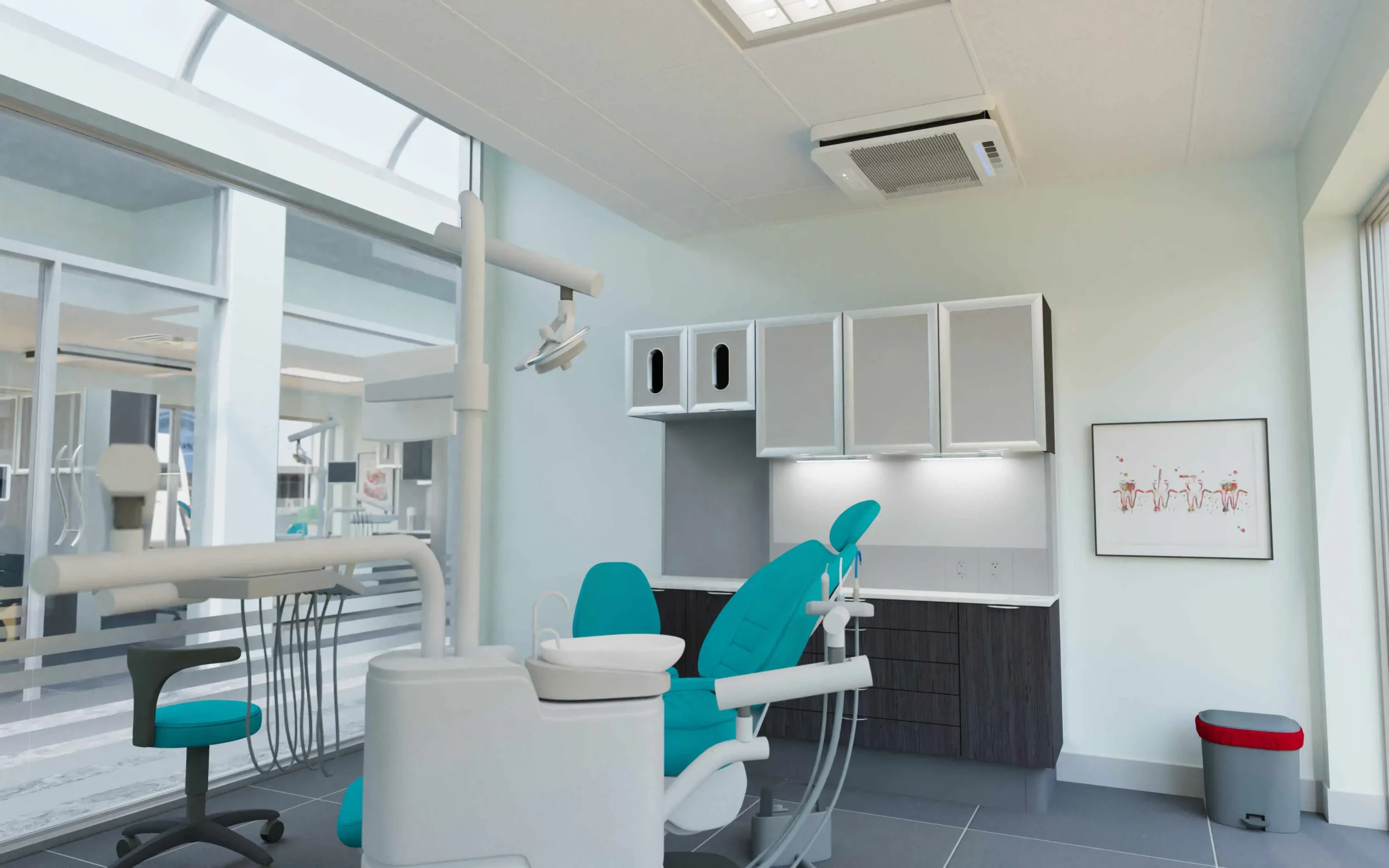
의료용 필터의 역할
병원에서 공기질이 얼마나 중요한지 처음 깨달은 때가 기억납니다. 중환자실에 있는 친구를 방문했을 때였습니다. 공기가 이전과는 다르게 깨끗하고 편안하게 느껴졌어요. 그때 저는 의료용 필터에 대해 알게 되었습니다. HEPA 14. 이 기기는 일반적인 기기와는 달리 최소 99.995%, 최소 0.3마이크론의 작은 입자를 포착합니다. 이 필터링 수준1 는 매우 중요한데, 병원에서는 아주 작은 오염 물질도 생사의 문제가 될 수 있기 때문입니다. 이러한 필터는 질병에 대한 보이지 않는 보호자 역할을 합니다.
의료용 필터와 표준 필터 비교
| 기능 | 의료용 필터 | 표준 필터 |
|---|---|---|
| 파티클 캡처 | 0.3미크론의 ≥99.995% | ≤99%의 큰 입자 |
| 대상 오염 물질 | 박테리아, 바이러스 | 먼지, 꽃가루 |
| 애플리케이션 | 병원 | 가정, 사무실 |
환자 안전은 다음과 같은 분야에서 타협할 수 없습니다. 의료 환경2. 환자 안전이 가장 중요한 곳에서는 의료용 필터가 필요합니다. 매우 취약한 환자에게 일반 필터를 사용하시겠습니까? 분명한 것은 최고급 필터만 사용해야 한다는 것입니다.
설치 및 성능 고려 사항
이제 설정에 대해 이야기해 보겠습니다. 병원은 특별한 도움이 필요한 바쁜 장소이기 때문에 공기청정기를 설치하는 것은 단순히 방에 배치하는 것만이 아닙니다. 높은 청정 공기 전달률(CADR) 1000평방피트 이상의 넓은 공간에는 300CFM 이상의 제품을 사용하는 것이 좋습니다. 벽걸이형 또는 천장형 옵션은 방해를 최소화하고 최적의 공기 순환을 보장하므로 적합한 장소를 찾기가 어려울 수 있습니다.
소음은 환자와 직원에게 방해가 되지 않도록 반드시 해결해야 하는 숨겨진 문제입니다. 많은 병원에서 다음과 같은 기능을 갖춘 정수기를 선택합니다. 데시벨 캔슬레이션™3 평화와 조용함이 치유에 매우 중요하기 때문에 조용한 작동을 보장하는 기술을 사용합니다.
규정 준수
특히 미국 병원에서 사용하는 공기청정기의 경우 FDA 승인과 같은 규정 준수가 필수적인 의료 환경에서 규칙을 준수하는 것이 중요하다는 것을 알게 되었습니다. 이 인증은 제품이 의료 환경에 필요한 안전 표준을 충족한다는 것을 보장합니다. 액티브 퓨어와 헬스웨이 같은 브랜드가 이 인증을 획득하여 안심하고 사용할 수 있습니다.
중국에서는 공기청정기를 공기 소독기로 인증받아야 하며, 건강과 안전에 만능 해결책이 없기 때문에 지역별 규제 준수의 중요성을 강조하고 있습니다.
결론 자리 표시자
병원 환경에서 의료용 필터의 필요성을 아는 것은 안전과 위생을 유지하는 데 필수적이며, 이는 건강과 생명을 보호하는 일입니다. 다음과 같은 옵션을 살펴보세요. HEPA 14개의 필터를 통해 병원은 모든 사람에게 더 깨끗하고 안전한 환경을 제공할 수 있습니다.
HEPA 14 필터는 0.3마이크론 입자 99.995%를 포착합니다.True
HEPA 14 필터는 최소 99.995%의 입자를 포집하도록 설계되었습니다.
표준 필터는 병원 환경에 적합합니다.False
표준 필터로는 병원에서 필요한 보호 기능을 제공할 수 없습니다.
어떻게 CADR 병원 공기청정기의 효율성에 영향을 미치나요?
사람들은 종종 병원에서 공기를 신선하고 깨끗하게 유지하는 방법에 대해 생각합니다. 좋은 공기 청정기는 CADR 등급은 불순물을 제거하는 데 도움이 됩니다.
CADR 또는 청정 공기 전달률은 공기청정기가 공기를 얼마나 효과적으로 정화하는지를 측정합니다. 병원에서는 높은 CADR 등급을 받았습니다. 이 등급은 기계가 먼지, 꽃가루, 연기와 같은 오염 물질을 빠르게 제거한다는 것을 보여줍니다. 실제로 공기의 질을 개선합니다. 공기가 더 깨끗해집니다. 이는 환자와 직원에게 더 안전한 환경을 조성합니다.
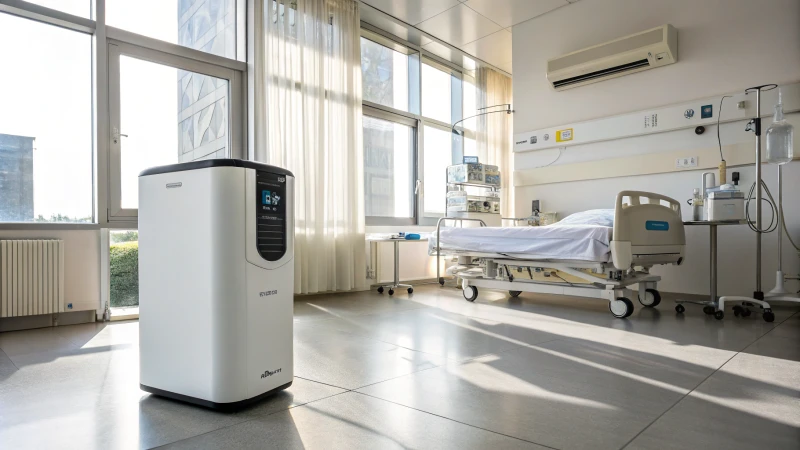
이해 CADR 병원 설정에서
깨끗하고 신선한 공기를 기대하며 병실에 들어섰다고 상상해 보세요. 눈에 보이지 않는 수많은 작은 입자들이 떠다니며 연약한 사람이 들이마실 준비를 하고 있을 것입니다. 그리고 깨끗한 공기 전달률 (CADR)4 는 공기청정기가 공기를 얼마나 잘 정화하는지를 측정하는 데 도움이 됩니다. 병원과 같은 중요한 장소에서는 공기 정화 능력이 높은 공기청정기를 선택해야 합니다. CADR 는 필수품이 되었습니다. 300 CFM 이상의 수치는 바쁜 응급실과 같은 넓은 공간을 커버하는 데 이상적입니다.
| 오염 물질 | 추천 CADR |
|---|---|
| 먼지 | 300+ CFM |
| 꽃가루 | 350+ CFM |
| 스모크 | 400+ CFM |
의료용 필터
하지만 여기서 멈추지 마세요. CADR. 다음과 같은 의료용 필터를 검토합니다. HEPA 14가지가 중요합니다. 이 필터는 병원 공기의 불청객인 박테리아와 바이러스를 포집합니다. 유해한 입자가 폐로 들어가기 전에 거의 모든 입자를 걸러냅니다. 좁은 병원 공간에서, 공기 청정기5 벽걸이형 또는 천장 설치형으로 모든 것을 바꿀 수 있습니다.
규제 고려 사항
규정을 이해하는 것은 새로운 언어를 배우는 것과 같습니다. 미국에서는 디바이스가 의료 환경에 적합한지 확인하여 FDA 승인을 받아야 할 수 있습니다. Active Pure 및 Healthway와 같은 브랜드는 병원의 이러한 요구를 충족합니다. 한편 중국에서는 기기가 현지 표준을 충족하기 위해 공기 소독기 인증을 받아야 합니다.
노이즈 제어의 중요성
시끄러운 이웃을 좋아하는 사람은 아무도 없습니다. 특히 조용함이 힐링의 일부인 경우 더욱 그렇습니다. 시끄러운 기계를 옆에 두고 잠을 자려고 한다고 상상해 보세요! 데시벨 캔슬레이션™과 같은 기술은 작동 소음을 크게 줄이는 데 도움이 됩니다.
선택에 혼란을 겪고 있는 분들을 위해 다음과 같은 회사의 컨설팅 전문가가 도와드립니다. HisoAir6 는 아마도 전문가의 조언을 제공할 것입니다. 성능과 환자의 편안함의 균형을 맞추는 데는 숫자뿐만 아니라 마음의 평화도 포함됩니다.
병원용 공기청정기에는 300 CFM 이상의 CADR이 이상적입니다.True
300 CFM 이상의 CADR은 대형 병원 공간을 효과적으로 커버합니다.
모든 미국 병원용 공기청정기는 FDA 허가가 필수입니다.False
모든 병원용 공기청정기에 FDA 승인이 필요한 것은 아니며, 일부만 필요합니다.
병원용 공기청정기에는 어떤 인증을 받아야 하나요?
병원 공기청정기가 최고 수준의 인증을 받았을 때의 편안함을 상상해 보세요. 깨끗한 공기뿐만 아니라 생명을 보호하는 데에도 정말 중요합니다.
병원에서 사용하는 중요한 인증을 받은 공기청정기를 선택하세요. HEPA 14개의 필터는 의료 등급의 여과 기능을 제공하며, 이는 매우 중요합니다. FDA 승인을 통해 건강 안전성을 확인했습니다. 장치 필요 사항 CADR 300 CFM 이상의 정격. 이는 최적의 성능을 약속합니다.
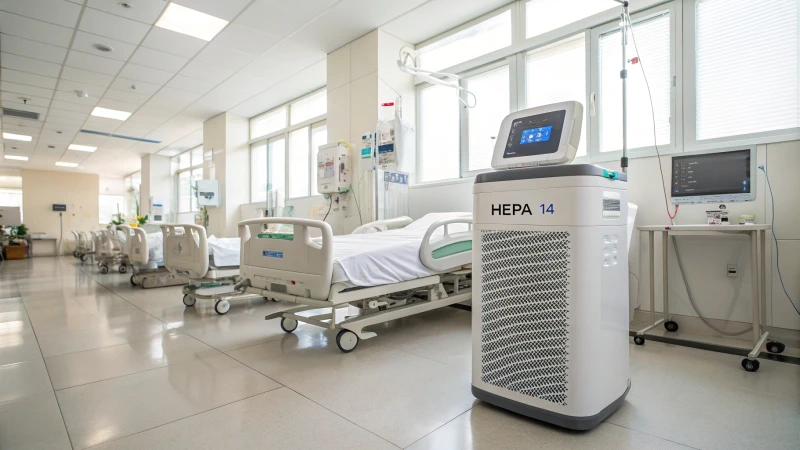
주요 인증에 대한 이해
특히 건강이 위험할 때 공기청정기를 이해하는 것은 혼란스럽게 느껴질 수 있습니다. 저도 처음 이 주제를 탐구할 때 같은 느낌을 받았습니다. 모든 것이 복잡한 단어와 짧은 형식으로 가득해 보였죠. 한 가지 분명한 것은 인증의 중요성이었습니다.
하나의 필수 요소 인증7 는 HEPA 14 필터로 의료 등급의 여과 성능을 보장합니다. 이 유형의 필터는 박테리아와 바이러스를 포함한 공기 중 입자를 최대 99.995%까지 제거할 수 있습니다. 이러한 효율성은 의료 환경에서 매우 중요합니다.
또 다른 중요한 인증은 FDA 승인입니다. 미국에서 FDA 승인은 공기청정기가 엄격한 건강 및 안전 기준을 충족한다는 것을 의미하며, 특히 의료 환경에서 중요합니다.
| 인증 | 설명 |
|---|---|
| HEPA 14 | 99.995%의 공기 중 입자를 제거할 수 있는 의료용 여과 장치입니다. |
| FDA 승인 | 미국 건강 안전 표준을 준수함을 나타냅니다. |
성능 지표 및 표준
병원이나 클리닉용 공기청정기를 선택할 때 성능은 매우 중요합니다.
깨끗한 공기 전달률 (CADR8)도 고려해야 할 또 다른 중요한 지표입니다. 이는 공기 청정기가 특정 공간 내에서 공기를 얼마나 빨리 정화할 수 있는지를 측정합니다.
병원의 경우 다음과 같은 기능이 있는 정수기를 선택하는 것이 좋습니다. CADR 300 CFM 이상으로 넓은 공간을 효율적으로 커버할 수 있습니다.
| 성능 지표 | 중요성 |
|---|---|
| CADR > 300 CFM 이상 | 넓은 공간에서 효율적인 공기 청정을 보장합니다. |
설치 및 소음 수준
청결도 중요하지만 병원 환경의 평화로운 분위기도 중요합니다.
병원 환경에서는 설치 옵션도 중요합니다. 벽걸이형 또는 천장형 공기청정기는 공간을 절약하고 공기 순환을 원활하게 하기 때문에 더 적합할 수 있습니다.
HisoAir와 같은 브랜드는 병원에서 사용하기에 이상적인 이러한 구성을 제공합니다.
병원에서는 환자와 직원 모두에게 조용한 환경이 필요하므로 소음 수준을 무시해서는 안 됩니다. 데시벨 캔슬레이션™과 같은 고급 소음 제거 기술이 적용된 공기청정기를 선택하면 의료 환경에서 평온함을 유지하는 데 도움이 될 수 있습니다.
다음에 대한 자세한 인사이트 소음 제어 기술9에서 히소에어와 같은 고유한 기능을 갖춘 제품을 탐색하면 추가적인 도움을 받을 수 있습니다.
HEPA 14 필터는 99.995%의 입자를 제거합니다.True
HEPA 14 필터는 99.995%의 공기 중 입자를 포집하도록 설계되었습니다.
병원용 정수기에는 FDA 승인이 필요하지 않습니다.False
FDA 승인은 공기청정기가 병원의 건강 및 안전 기준을 충족한다는 것을 보장합니다.
다양한 설치 유형이 병원 공기청정기 성능에 어떤 영향을 미치나요?
병원 공기청정기를 배치하는 다양한 방법이 성능에 어떤 영향을 미치는지 궁금한 적이 있나요?
다양한 유형의 병원용 공기청정기는 다양한 방식으로 공기의 흐름을 돕습니다. 벽걸이형, 천장형, 휴대용 공기청정기는 모두 공기의 이동 방식에 영향을 미칩니다. 공기청정기가 커버하는 공간도 달라집니다. 소음 수준도 달라집니다. 각 공기청정기 유형에는 특별한 장점과 단점이 있습니다. 이러한 장점과 단점은 각 병원의 고유한 요구사항과 일치합니다. 또한 건물 인프라에 적합해야 합니다.
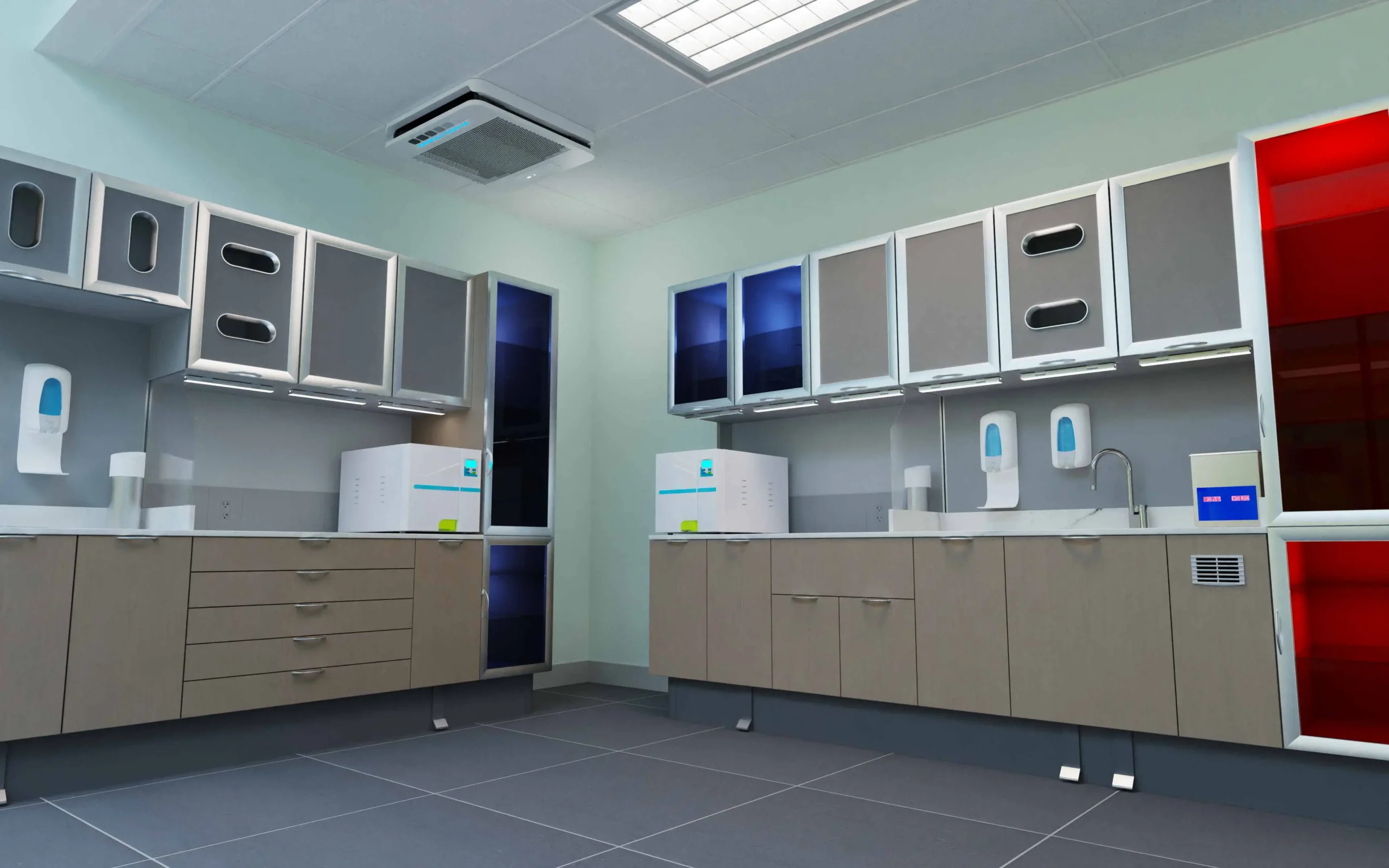
벽걸이형 공기청정기
벽걸이형 공기청정기는 모든 공간이 중요한 병원에 딱 맞는 선택입니다. 바쁜 병동을 걷는 모습을 상상해 보세요. 공간이 정말 중요하죠? 이 공기청정기는 바닥 공간을 절약하면서 깨끗한 공기가 자유롭게 흐르도록 해줍니다. 제가 이 제품을 사용하는 병원을 방문한 적이 있는데 공간이 훨씬 넓어진 느낌이 들었습니다. 아주 작은 세균까지 잡아내는 특수 필터가 있어 병원을 더욱 안전하게 만들어 줍니다.
| 장점 | 고려 사항 |
|---|---|
| 공간 절약형 디자인 | 설치를 위해 견고한 벽이 필요함 |
| 막힘 없는 공기 흐름 | 전문적인 설치가 필요할 수 있습니다. |
| 안전한 배치 | 제한된 이동성 |
다음에 대한 자세한 정보 벽걸이형 공기청정기10설치 요구 사항을 안내해 줄 수 있는 전문가와 상담하는 것이 좋습니다.
천장 장착형 공기 청정기
천장에 설치하는 정수기는 큰 병실의 조용한 영웅입니다. 마치 극장 조명이 장애물을 일으키지 않고 넓은 공간을 비추기 위해 현명하게 설치되는 것을 연상시킵니다. 이 공기청정기는 공기를 고르게 퍼뜨리기 때문에 병실이나 바쁜 대기실에서 특히 유용합니다. 많은 제품이 소음을 줄이도록 설계되어 조용히 작동하므로 다른 사람을 방해하지 않습니다. 이는 병원에서 매우 중요한 평온함을 유지하는 데 큰 도움이 됩니다.
- 넓은 범위: 천장 장치는 일반적으로 더 넓은 면적을 커버하고 실내에 일정한 공기 흐름을 제공합니다.
- 조용한 작동: 많은 모델이 조용한 병원 환경에 중요한 저소음 기술을 사용합니다.
다음 사항을 고려하고 있다면 천장 장착형 공기청정기11를 클릭하고 기존 설정에 적합한지 전문가와 상담하세요.
휴대용 공기 청정기
휴대용 공기청정기는 매우 편리합니다. 병원 내 여러 구역의 공기질을 빠르게 개선해야 할 때를 상상해 보세요. 쉽게 이동할 수 있어 가장 필요한 곳에 공기 정화를 제공할 수 있습니다. 응급실부터 격리 구역까지, 변화하는 병원의 필요에 맞게 사용할 수 있습니다. 일시적인 상황이나 예측할 수 없는 환자 수에서 그 가치를 입증합니다.
- 간편한 이동: 즉각적인 공기 청소가 필요한 장소로 빠르게 이동합니다.
- 유연한 사용: 다양한 객실 크기와 용도에 적합합니다.
일시적인 상황에 직면하거나 환자 수가 변경되는 경우 다음을 고려하십시오. 휴대용 정수기의 장점12.
다양한 설치가 성능에 어떤 영향을 미치는지 알면 병원 내 공기질을 실제로 개선할 수 있습니다. 관리자는 각 공간의 특정 요구 사항을 연구하여 환자의 안전과 편안함을 향상시킬 수 있는 가장 효율적인 청정기 유형을 선택할 수 있습니다.
벽걸이형 정수기는 병원의 바닥 공간을 절약해 줍니다.True
수직 표면을 활용하므로 중요한 바닥 면적을 확보할 수 있습니다.
천장에 설치된 정수기는 병원 활동을 방해합니다.False
머리 위 공간을 사용하므로 아래에서 방해받지 않고 이동할 수 있습니다.
결론
병원에는 다음과 같은 기능이 있는 공기청정기가 필요합니다. HEPA 14개 필터, 높음 CADR 등급을 획득하고, 최적의 공기질을 위한 FDA 승인을 받아 치료 환경에서 환자의 안전과 편안함을 보장합니다.
-
의료 환경에서 건강을 위협하는 미세 입자를 걸러내는 HEPA 14 필터가 어떻게 설계되었는지 알아보세요. ↩
-
효과적인 공기 정화가 병원 내 감염 관리에 중요한 이유를 알아보세요. ↩
-
데시벨 캔슬레이션™ 기술이 어떻게 조용한 작동을 보장하여 병원 환경의 편안함을 향상시키는지 알아보세요. ↩
-
이 링크를 통해 높은 CADR이 병원 환경의 공기 정화 효율에 어떤 영향을 미치는지 알아보세요. ↩
-
HEPA 14 필터가 의료 환경에서 유해 입자를 포집하는 데 중요한 이유를 알아보세요. ↩
-
병원에서 사용할 수 있는 최적의 공기청정기를 선택하는 데 도움을 줄 수 있는 HisoAir 전문가를 만나보세요. ↩
-
박테리아와 바이러스를 포집하여 안전을 보장하는 병원급 공기 정화에 HEPA 14 필터가 필수적인 이유를 알아보세요. ↩
-
대규모 병원 공간에서 공기질을 유지하는 데 중요한 공기 청정기 성능에 CADR 등급이 어떤 영향을 미치는지 알아보세요. ↩
-
데시벨 캔슬레이션 기술이 공기청정기의 소음을 줄여 환자의 편안함과 직원의 효율성을 향상시키는 방법을 알아보세요. ↩
-
벽걸이형 정수기가 병원에 공간 효율적이고 안전한 이유를 알아보세요. ↩
-
천장 설치로 커버리지를 향상하고 소음을 줄이는 방법에 대해 알아보세요. ↩
-
휴대용 청소기가 어떻게 유연성과 맞춤형 청소 기능을 제공하는지 알아보세요. ↩


